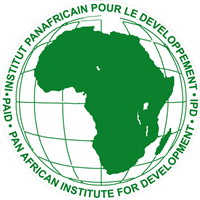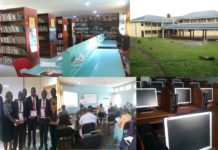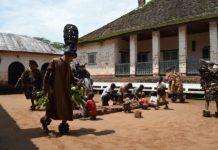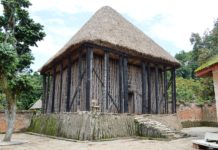This village study was conducted in Lewoh, Alou Sub-division, in the Southwest Province in the Republic of Cameroon. The research was in partial fulfillment for the award of a Diploma in Development Studies, aimed at enhancing participant’s knowledge and skills to collect data and analyze it using Participatory Rural Appraisal tools and techniques. The village study commenced on 1st December and ends on the 22nd December 2007, with six participants known as PRA outsiders and 3 PRA insiders.
The people of Lewoh settled in this region around the mid 18th century. Lewoh consist of a homogeneous people of the Nweh tribe. It has a population of approximately 14,000 inhabitants of whom 60% is female and 40% male. Lewoh is a Fandom, not a village. As a Fandom it has 47 villages, but this study concentrated on Anya Lewoh, which is the headquarters of the Fondom. Anya-Lewoh has 17 quarters.
The people of Lewoh are enterprising and hardworking since the time of earlier settlers, they had embraced development and today the community is greatly benefiting from this foresight.90% of the population is engaged in Agriculture. Both men and women are actively involved in cash crop production, but women are the main producers of subsistence crops.
With respect to social amenities, Lewoh can boast of the following infrastructures; Pipe Borne Water, Electricity, Agric Post, Hospital, Catholic Church, Baptist Church, Apostolic Church, Government Technical College, Government High School, Catholic Primary School, Six Government Primary Schools, A Fon’s palace, Women Empowerment Center, Market, Bars, Community Hall and Three Government Nursery Schools
Despite these facilities, the people of Lewoh are constrained by many problems, key among them is poor road network particularly farm to market roads. Even the main roads linking Lewoh to the neighboring communities require urgent maintenance. During the problem identification process the group used a sector wide approach. Key informants were interviewed in all the key sectors such as education, health, agriculture, economic sector, youths and women groups and they were asked to list there constraints. After all the interviews, all the key informants were invited to a focus group discussion, where the problems highlighted were put before them. The focus group discovered that some of the problems are similar and thus decided to group them into seven main problems. The participants at the focus group discussion were each given seven stones to vote for the problem they think is the most pressing need of the community.
(see problem ranking chart in table 1 of full report)
- Poor roads network
- Inadequate financial resources
- Poor market and marketing system
- Inadequate capacity building
- Lack of transport facilities
- Weak collective efforts
- Administrative conflicts.
Even though poor road network was ranked as the community’s number one problem, they all agreed to address inadequate capacity building for the suggested development plan, because they believed that no realistic plan can be developed on poor roads, due to the high cost involved. The main activities of the S.D.P. are trainings on leadership skills, livelihood skills, marketing and business management. After these trainings, participants will be provided an initial capital of 50.000 FCFA. The last phase of the project will concentrate on strengthening existing groups or creating new ones. The total cost of the SDP is 7,220,000 FCFA. The project is intended to run from 2008 to 2012.










